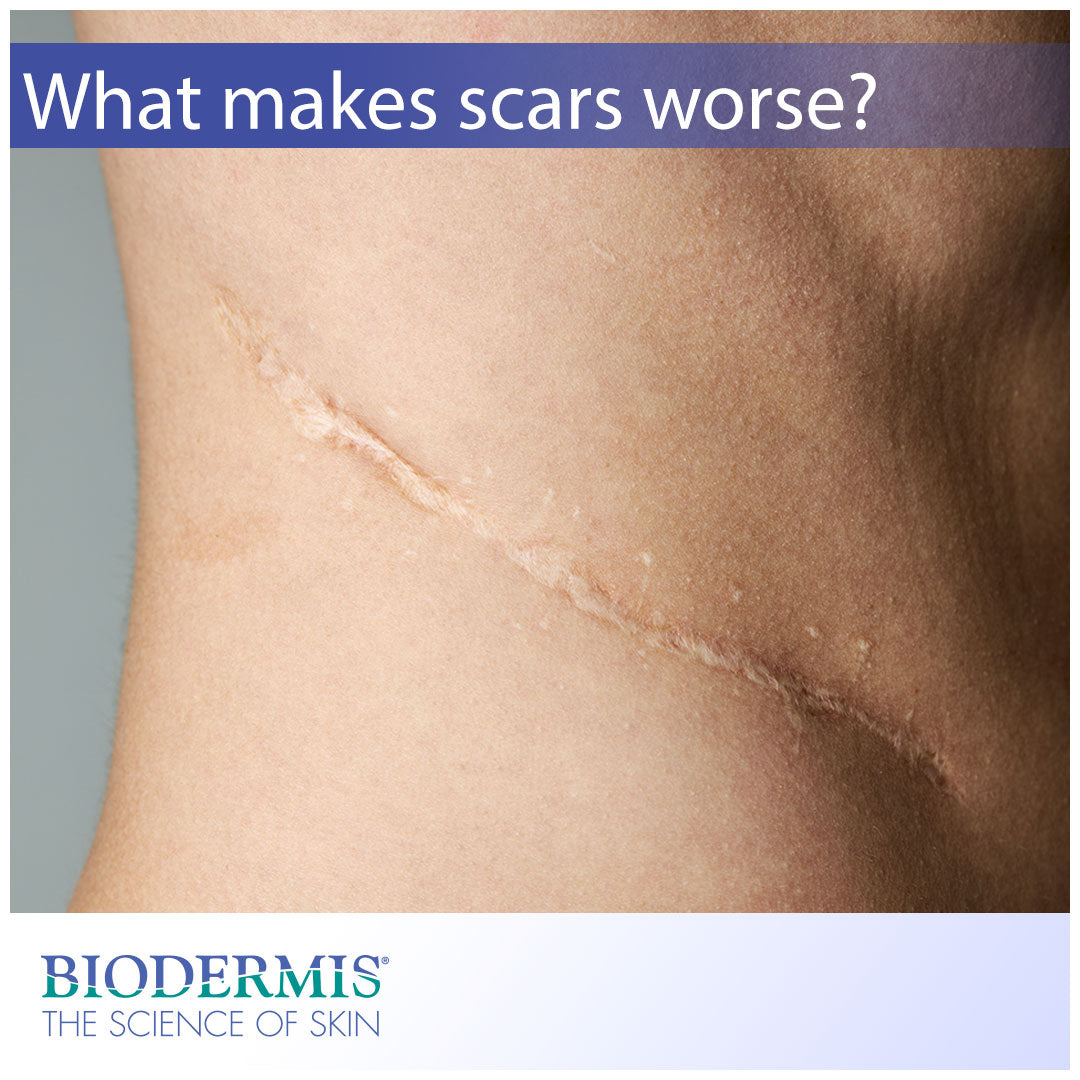Sometimes, scars are an unavoidable result of the wound healing process. When serious injury or invasive surgery is involved, there is no getting around the fact that you will be left with a scar. Depending on the location and size of the scar, it can be a real nuisance. In the best case scenario, scars will fade over time with the help of medical-grade silicone gel. However, there are factors that can make scars look worse over time, so it’s important for you to be aware of them. In this article, we will go over some of the more common factors that can contribute to making your scar look worse over time.
Sun exposure
Direct sun exposure over long periods of time can cause hyperpigmentation in the scar tissue, causing it to appear darker in color. Generally, the goal with scars is to have them fade and appear lighter over time, not darker. This may not be an issue if your scar is covered by clothing throughout the day. However, for scars on the face or other parts of the body that get a lot of sun exposure, make use of sunscreen on a regular basis. Dermatologists recommend using a sunscreen with an SPF of at least 30, which blocks out 97% of the sun’s harmful UVB rays.
Re-injury
The wound healing process is complex and dynamic, resulting in scar tissue that is weaker in tensile strength than unscarred skin. Microscopic images of skin will show collagen aligned in a cross-weave pattern, whereas scar tissue is aligned in a parallel pattern. Even though scars are made up of collagen and other structural proteins, it doesn’t have the integrity it once did. Re-injury will further aggravate the skin and cause even greater scar tissue than the first time.
Wound infection
The longer it takes for a wound to heal, the worse a scar will look down the road. When a wound gets infected, specialized skin cells known as fibroblasts won’t work as efficiently because they are competing with the microorganisms causing the infection. Furthermore, infections can lead to an overproduction of collagen at the wound site. When collagen builds up, it can form into keloids or hypertrophic scars. These scars are marked by their raised and discolored appearance. Some ways to tell that your wound is infected is if it is red, warm, and painful. Minor wound infections can usually be managed by washing the wound with soap and water and applying an antibacterial ointment afterwards.
Vitamin E and other topical creams
There are many products that are touted for helping scars fade over time. One such product is vitamin E oil or creams. There is no clinical evidence that vitamin E is effective in treating scars. In fact, in one study, vitamin E was actually shown to cause contact dermatitis in 33% of patients, thereby making the scar appear worse. Some silicone-based products for scars may contain trace amounts of vitamin E, but this is only to increase lubrication and isn’t enough to cause adverse side effects. When exploring products for post-operative scar treatment, you should only choose products that are verified through scientific evidence.
Biodermis is an innovative market leader with 30 years of expertise in the medical silicone industry. Visit Biodermis.com today to explore a complete range of scar management and post-operative care solutions.
Biodermis offers custom tailored referral programs designed to simplify and reduce the cost of your patients' post-op care. Additionally, we offer professional pricing if you opt to retail our products. Give us a call at 800.322.3729, and we will be happy to provide additional details on these programs.





